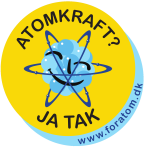A light water reactor is a nuclear reactor that utilizes ordinary water as a moderator and cooling medium. This type of reactor is classified into two distinct categories: pressurized (PWRs) and boiling water (BWR) reactors. The two types of light water reactors operate differently due to the method by which steam is produced, the pressure within the system, and the process that the steam undergoes after it is generated.
Pressurized water reactors (PWRs) utilize a pressurized water system to transfer heat from the reactor core to the steam generator. The water within the reactor core is heated by nuclear fission, and the resulting heat is transferred to the pressurized water system. This system then transfers the heat to a secondary water system, which produces steam to power the turbine.
Boiling water reactors (BWRs), on the other hand, utilize a single water system to transfer heat from the reactor core to the turbine. The water within the reactor core is heated by nuclear fission, and the resulting steam is directly used to power the turbine.
In summary, light water reactors are nuclear reactors that use ordinary water as both a moderator and cooling medium. They are classified into two types: pressurized (PWRs) and boiling water (BWR) reactors, which operate differently due to the method by which steam is produced, the pressure within the system, and the process that the steam undergoes after it is generated




